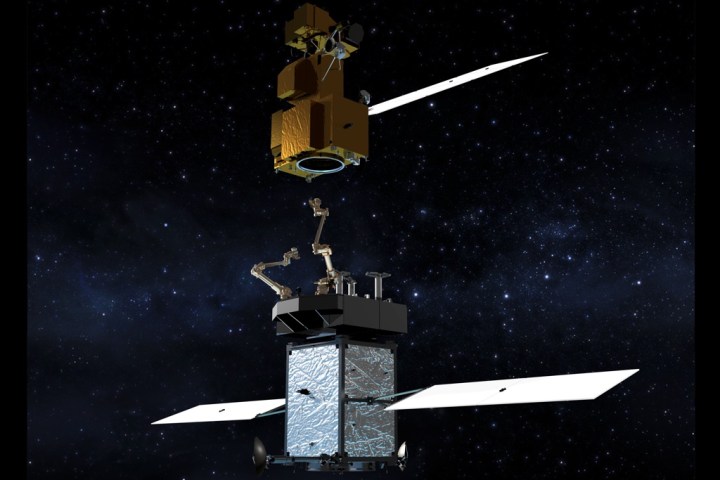
In its first revision, the planned Restore-L servicer will be a space-based robot capable of refueling a satellite in orbit. The robot will contain an autonomous navigation and docking system that’ll make it easy for the robot to hook up with a satellite in orbit. A robotic arm with tools and a tool drive will allow the robot to refuel a satellite, delivering the necessary amount of fuel at the correct pressure, rate, and temperature for the spacecraft.
Once it has completed refueling, the Restore-L robot will detach from the satellite and move on to its next client. NASA hopes to test the technology on its Landsat 7 satellite, a low-Earth-orbit satellite deployed and managed by NASA and the USGS.
Though initially designed for refueling, NASA plans to expand the capabilities of Restore-L to include other maintenance activities that will extend the life of an orbiting spacecraft. “Restore-L effectively breaks the paradigm of one-and-done spacecraft,” says Satellite Servicing Capabilities Office (SSCO) Associate Director Frank Cepollina in a prepared statement. Once deployed, the robot could act as a gas station in space, providing satellites with much-needed propellant. On the maintenance side, the robot one day may be able to manufacture and assemble components in space and use them to service a satellite. It also may be used to reduce space accidents by removing space junk from orbit.
Besides its role as a maintenance robot, NASA plans to use this mission to develop and test technology for upcoming missions such the Asteroid Redirect Mission and the Wide-Field Infrared Survey Telescope (WFIRST) observatory. The WFIRST, which was announced earlier this year, is being built with support for in-orbit refueling by maintenance robots such as Restore-L.
NASA also wants to bring this technology to space industry as a whole, and is offering the tech to satellite owners who want to maintain their satellites in space instead of abandoning them. “With robotic servicing on the table, satellite owners can extend the lifespan of satellites that are running low on fuel, reaping additional years of service — and revenue — from their initial investment,” says Benjamin Reed, SSCO deputy project manager.



